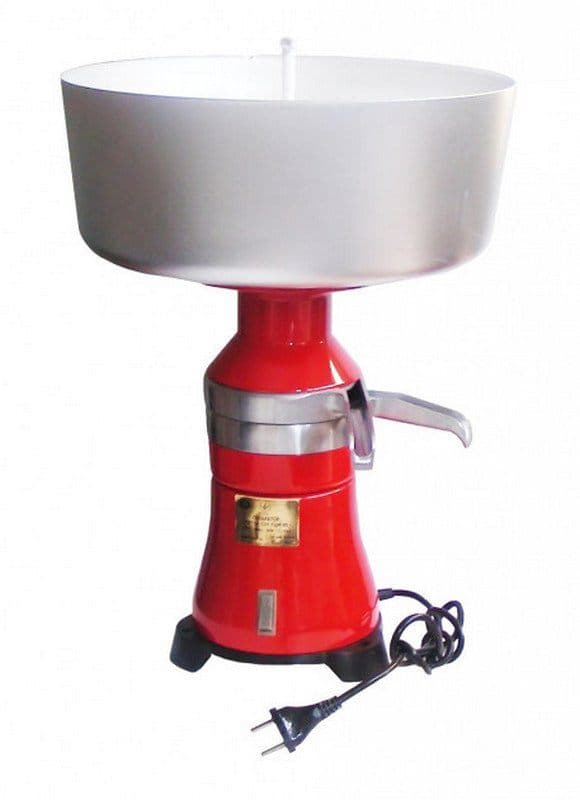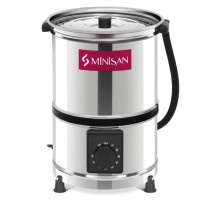How to choose a separator?
A separator is an indispensable device if you are engaged in dairy farming. With it, you will always have not only fresh milk, but also natural cream, sour cream, homemade butter, cheese and much more.

The main working part of the separator is the centrifuge. It is in it that the separation of light fats from the protein part occurs.
The separator is an indispensable device if you are engaged in dairy farming. With it, you will always have not only fresh milk, but also natural cream, sour cream, homemade butter, cheese and much more.
The main working part of the separator is the centrifuge. It is in it that the separation of light fats from the protein part occurs. This happens under the action of centrifugal force and gravity. The output is fatty thick cream and skim milk, or simply skim milk.
With a separator, it is much easier to obtain processed products, which will not only diversify your diet, but also simplify the task of storing milk.
Classification of separators
All such devices have a similar device, but they can differ greatly from each other.
Separators differ:
by type of drive (there are electric and manual);
the material from which the plates are made and their number;
the volume of milk processed (household models process up to 50-100 liters per hour, depending on the drive);
functionality (cleaning, cream separators, separators-churns).
When choosing it, first of all, you need to decide on the type of drive.
Electric separators
The electric drive significantly simplifies and speeds up milk processing. The disadvantages of this type are the high noise level and high cost in comparison with manual models.
But separators with an electric drive have many more advantages. First of all, they have increased productivity. In an hour, one device can process from 80 to 100 liters of whole milk.
The electric drive rotates the centrifuge at a frequency of 10,500 rpm, which ensures maximum separation of fractions.
Plates are both aluminum and plastic. Metal ones are more durable, the latter are made of polypropylene, which has high wear resistance, but still have a shorter service life.
Manual separators
Historically, the first separators to appear were those that operate using muscle power. With minor changes, they still exist today.
Such separators are activated by a handle. To increase the speed, the working mechanism has a built-in gearbox. Thanks to it, with one turn of the handle, the centrifuge makes several cycles. However, the frequency is still several times lower than that of models with an electric drive. Because of this, productivity suffers. It reaches no more than 50 l / hour. The separation capacity also deteriorates, which affects the fat content of the skim milk and the amount of cream.
The advantage is that due to the lower speed of the centrifuge, breakdowns occur less often. Manual separators are quieter and more compact.
Which separator should I choose?
When choosing a model, you need to pay attention to the following characteristics:
volume of milk being processed;
time;
additional functions;
type of milk;
fat content at the outlet.
For small farms with one cow, a manual separator will be enough. But if you need to process milk almost on an industrial scale, then you will need a model with an electric drive. It will also significantly speed up the cream separation. In addition, manual separators are suitable exclusively for cow's milk, and for goat's milk they do not produce a sufficient number of revolutions.
0 reviews / Write a review







